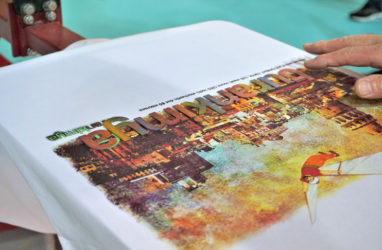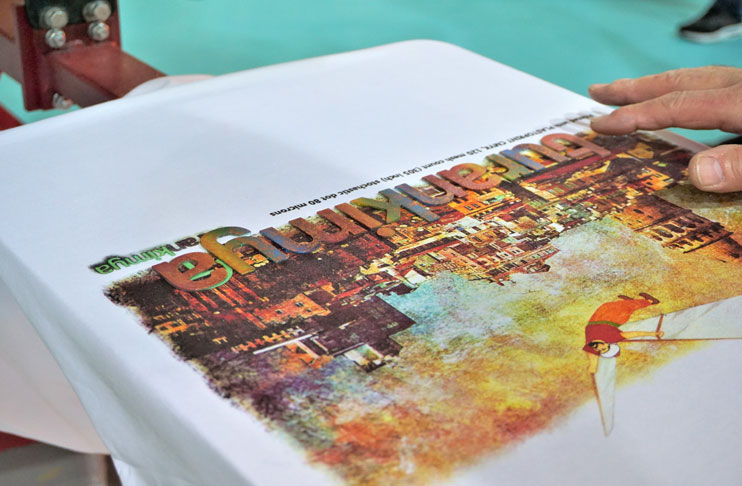
In its report titled, The Future of Digital Textile Printing to 2021, Smithers Pira valued the digital textile printing market at €1.17 billion in 2016 and has forecast growth at an annual average of 12.3% between 2016 and 2021[1]. It’s no wonder that this is an exciting and rapidly developing market.
The FESPA Print Census 2015 identified textile printing as a dominant growth application among respondents, 27% of whom were already involved in garment printing, with 81% seeing growth in this segment, the highest of any growth application[2]. Textile printing equipment also featured prominently among print service providers’ investment plans; with 21% of respondents specifically focussing spend in this area, supported by 12% planning to acquire thermal transfer equipment.
Textile printing industry has high potantial
The Turkish market has a significant head start here as garment and textile are already among the largest and best-performing sectors of the Turkish economy, accounting for around 7% of GDP (2013) and comprising 56,000 textile and clothing companies operating in the country[3]. The Turkish textile and clothing industry is one of the major players in the world market. In 2015 Turkey exported US$ 27.6 billion of textile and clothing products; which equated to almost one fifth of Turkey’s total exports.[4]
As one of the leading producers of textile, inevitably Turkey has an active textile printing market. However, where traditionally screen and rotary printing were the dominant processes; digital textile printing is rapidly expanding due to the change from mass production to personalisation. Quick turnaround times are also a benefit of digital printing and are an increasing priority for the fashion industry; due to changing seasons and limited edition garments. For printers with textile expertise, there are also interesting opportunities beyond garment, for applications such as flags and banners, interior décor items, and for consumer products such as mobile and tablet covers.
Decorative and industrial textile applications featured heavily in the FESPA Print Census findings, with 78% surveyed reporting growth in textile for décor applications. This includes products such as towels, bedding, curtains, upholstery, cushions, table linens etc. This is a blossoming textile market globally and, as one of the world leaders due to its wide range of products and superior quality in home textile production[5], Turkey plays a significant role in this market.
Turkey is an important country in textile
Turkey not only serves the domestic home textile sector but also exports 60% of its production. With the biggest export products in 2015 being towels, bathrobes, dressing gowns, curtain fabrics and bedding. Turkey’s main export country for home textiles is Germany, with USA, UK, France, Russia and the Netherlands; also major export markets for Turkish producers.[6]
Soft signage also presents major opportunities in digital textile printing. According to the FESPA Print Census, textile substrates are making significant inroads in the signage and graphics space; with 67% of PSPs observing sustained growth in soft signage. In the visual communications sector, the increased interest in printing on textile seems to stem from two key considerations – aesthetics and economics.
As an alternative to PVC vinyl and rigid materials, printed textile is versatile and appeals strongly to commercial customers; who typically find the softer, sleeker look and feel more natural, and the fluid movement of textile is more aesthetically appealing. Economic drivers are of course also influential. Textile substrates can be less costly to store and transport, and can lend themselves more readily to re-use than rigid materials.
FESPA Eurasia to showcase textile printing innovations
The growth in textile printing is a trend we’re witnessing globally at our shows. At our global print expo in Hamburg in May 2017 we saw an increase of 23% in textile printing exhibitors. Looking ahead, textile printing will have a substantial presence at FESPA Eurasia 2017 as 40% of exhibitors taking part in Istanbul for FESPA Eurasia are showcasing textile printing solutions for fashion, home textiles and soft signage. Visitors looking to see the latest textile printing solutions, both screen and digital, can attend FESPA Eurasia 2017 in Istanbul free-of-charge if they register using code: EURM705.
For more information on the exhibition and to pre-register visit www.fespaeurasia.com
By Michael Ryan, Group Exhibition Manager, FESPA
Footnote
[1] Smithers Pira, November 2016, http://www.smitherspira.com/news/2016/november/growth-for-digital-textile-print-market
2 FESPA, FESPA Print Census tells global story of optimism and growth, 19.05.15, http://www.fespa.com/news/press-releases/fespa-print-census-tells-global-story-of-optimism-and-growth.html
3 Fibre2Fashion, Turkey Textile Industry Overview, http://www.fibre2fashion.com/market-intelligence/countryprofile/turkey-textile-industry-overview/
4 Republic of Turkey, Ministry of Economy, 2016, https://www.economy.gov.tr/portal/content/conn/UCM/uuid/dDocName:EK-021124
5 Republic of Turkey, Ministry of Economy, 2016, https://www.economy.gov.tr/portal/content/conn/UCM/uuid/dDocName:EK-021143
6 Republic of Turkey, Ministry of Economy, 2016,
https://www.economy.gov.tr/portal/content/conn/UCM/uuid/dDocName:EK-021143



